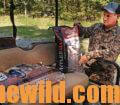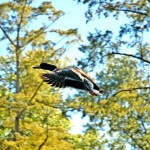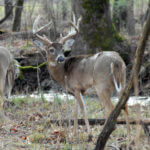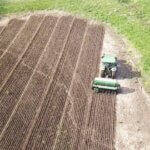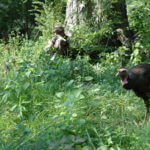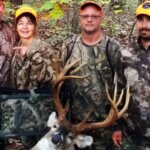Editor’s Note: Each state has different plant times when you’re planting for wildlife. The two best resources for knowing when to plant will be the companies you buy your seeds from and your state Department of Conservation. You can attract deer to an area, if you know what causes deer to come to certain foods at specific times of the year. You can find the magic ingredient that can put bucks where you want them during deer season right under your fingertips. Yet most hunters don’t know how, when or where to use fertilizer, which consistently will pay buck dividends each season. “I’ve seen deer walk through a green field to feed on fertilized plants and pass-by those plants not fertilized,” says Dr. Keith Causey, a retired professor of wildlife science at Auburn University and once head of the deer-research program there. “Deer seem to select the most-nutritious food they can find to eat. Therefore deer will come to and feed on fertilized plants more readily than on plants not fertilized.” You can fertilize green fields, nut and fruit trees and naturally-occurring wild plants to put bucks where you want them during hunting season. You also can plant seeds for wildlife food and put out mineral blocks.
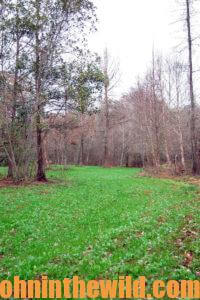
Swamp Field Planted with Superbuck
Dr. Causey recommends that you, “Plant small grain crops in a green field like wheat, oats and rye for the winter and clover for the spring.” Although most hunters know why to plant the different grain crops, many hunters don’t understand that deer feed on various kinds of clover during various periods of the year, which makes planting several types of clover with the small grains important. Deer feed on crimson clover early in the fall, and it provides high-quality forage throughout April. Arrowleaf clover, a late fall and early spring producer, yields a high volume of clover through April, May and June. Once established, subterranean and Ladino clovers produce year-round. But the highest-volume subterranean and Ladino clovers appear in the late spring and late summer periods.
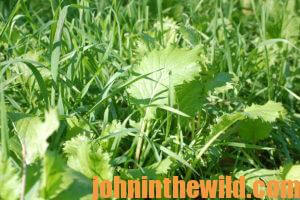
Buck Magnet
That’s why landowners who only plant Ladino clover may not reap the best benefits and provide the most food for deer during hunting season. But hunters can plant clover and winter grasses in combination to increase overall production of individual food plots. In particular, crimson and Ladino clovers do well in mixed-grass plantings. Mixtures also provide benefits to other wildlife such as turkeys and rabbits.
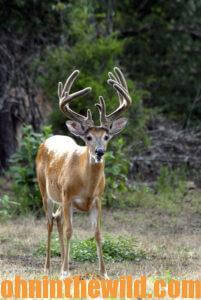 Your green field may dictate what type of clover you plant with the small grains. Clovers, high in calcium, may improve antler growth, particularly in places where mineral deficiencies occur. All clovers produce high quantities of forage, but you may find one specific clover better suited to a particular site than another. Ladino does well in moist, fertile soils. Subterranean clover works best in well-drained sandy loam or light clay soils. Arrowleaf grows best in well-drained, heavy soils, and crimson does well in a variety of soils. Let the type of soil and the way the land drains dictate the kinds of clover and small grains you choose for your green-field plantings. Most seed companies will have information on what products are best for the section of the U.S. where you’re planting, the soil type and the drainage of your green fields.
Your green field may dictate what type of clover you plant with the small grains. Clovers, high in calcium, may improve antler growth, particularly in places where mineral deficiencies occur. All clovers produce high quantities of forage, but you may find one specific clover better suited to a particular site than another. Ladino does well in moist, fertile soils. Subterranean clover works best in well-drained sandy loam or light clay soils. Arrowleaf grows best in well-drained, heavy soils, and crimson does well in a variety of soils. Let the type of soil and the way the land drains dictate the kinds of clover and small grains you choose for your green-field plantings. Most seed companies will have information on what products are best for the section of the U.S. where you’re planting, the soil type and the drainage of your green fields.
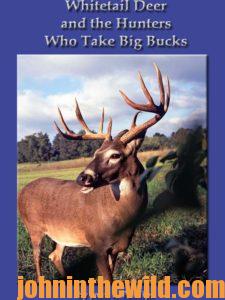 To learn more about hunting deer, check out John E. Phillips’ book, “Whitetail Deer and the Hunters Who Take Big Bucks,” available in Kindle, print and Audible at http://amzn.to/2bYwYOK. You may have to copy and paste this link into your browser. (When you click on this book, notice on the left where Amazon says you can read 10% of this book for free and hear 10% for free).
To learn more about hunting deer, check out John E. Phillips’ book, “Whitetail Deer and the Hunters Who Take Big Bucks,” available in Kindle, print and Audible at http://amzn.to/2bYwYOK. You may have to copy and paste this link into your browser. (When you click on this book, notice on the left where Amazon says you can read 10% of this book for free and hear 10% for free).

